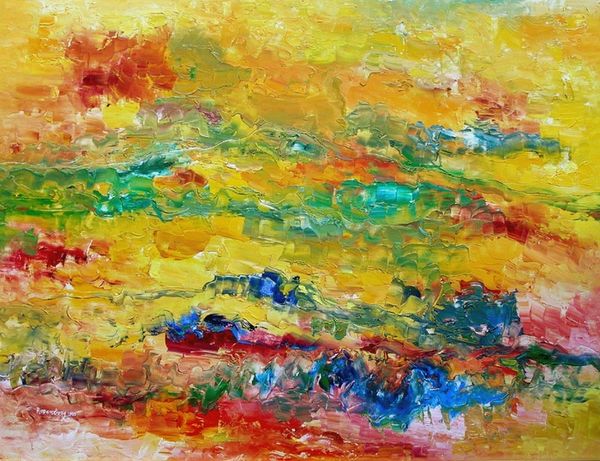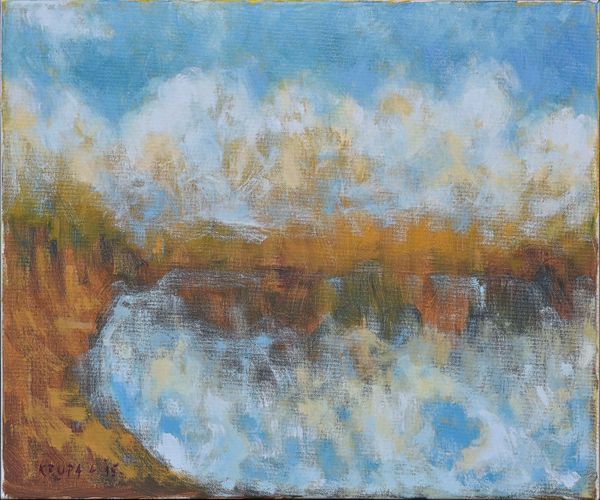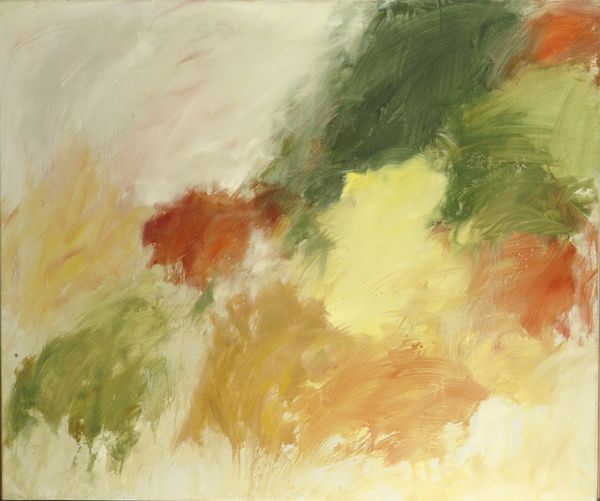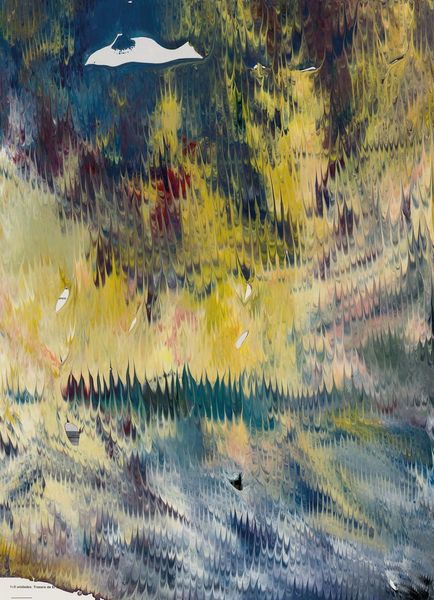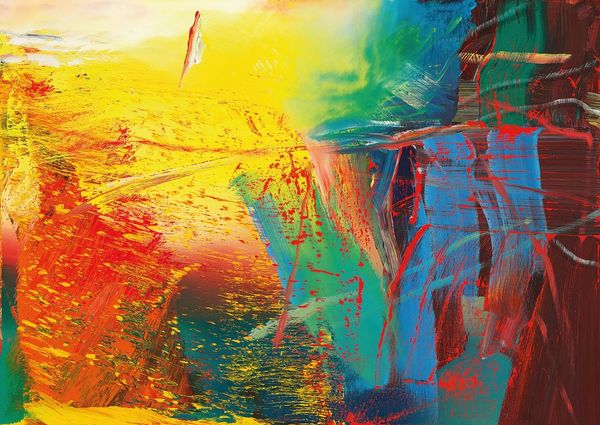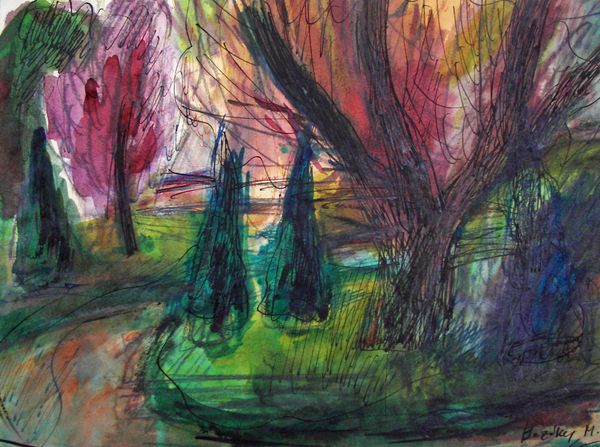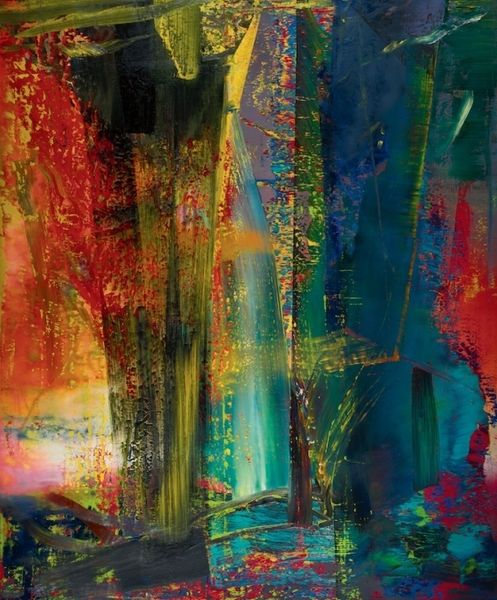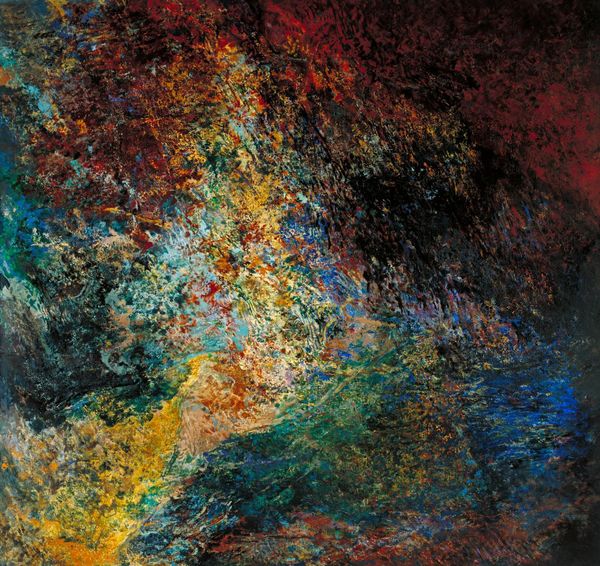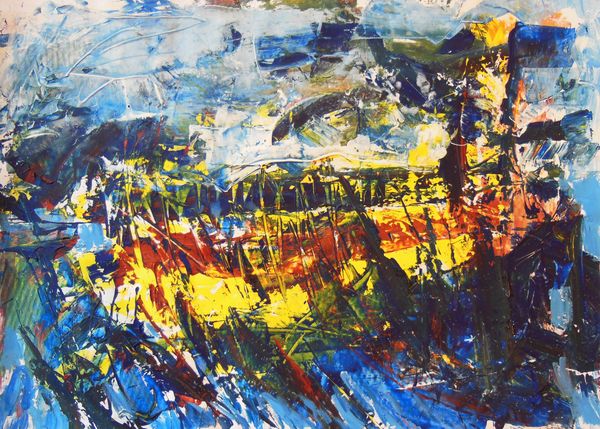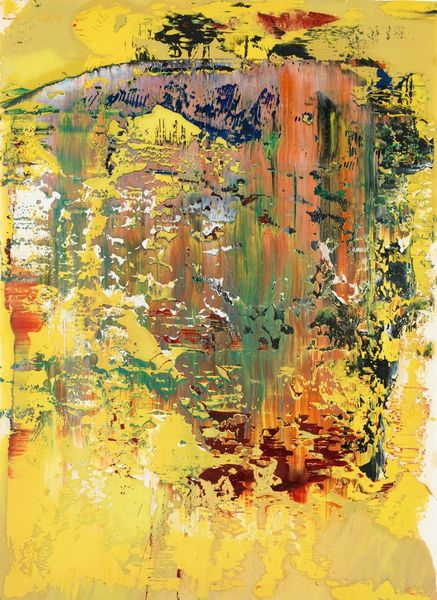
Dimensions: 110 x 85 cm
Copyright: Public domain
Curator: Alfred Freddy Krupa’s 2018 watercolor, "Karlovac at the Kupa river", offers us a glimpse into his contemporary abstract expressionist style. What's your immediate take on it? Editor: The intense wash of yellows initially obscures everything! It feels hazy, almost like a memory. You gradually discern forms through the layers: a cityscape perhaps, reflected in water, but the materiality, the way the watercolor bleeds and blends, takes center stage. Curator: Absolutely. Krupa’s exploration here dives into how abstract expressionism impacts our sense of place. Karlovac, a Croatian city, isn’t represented with photorealistic detail, yet the essence of a place reflected in the river Kupa seeps through. He shows how abstraction can portray memory and identity in landscape art. Editor: I'm struck by how the visible brushstrokes invite scrutiny. You see the work that goes into building this image – the delicate balancing act between control and the medium’s inherent fluidity. I wonder about Krupa’s choice of watercolor, known for its luminosity. What drove his selection process? Curator: I find it a conscious commentary. Watercolor moves away from the traditionally grand scale and weighty importance of oil painting often linked with canonical landscape art. This evokes conversations on access, democratisation, and visibility in both creating and viewing art within wider societal frames. Editor: I’d say it effectively reframes our view of labor itself. The transparency allows the viewer to participate in its making by seeing process so bare. Watercolor’s accessibility—relative to oil or sculpture—challenges perceptions of value associated with more ‘durable’ materials. Curator: The ethereal quality challenges assumptions about what landscapes, historically powerful signifiers of national identity and ownership, represent in today's society. Is it more than simply depicting scenery? Editor: It moves towards capturing atmosphere—that yellow almost radiating! For me, that choice links more to lived experience—humidity and heat and slow rivers. Perhaps, we need to really embrace more ephemeral techniques and methods within our art to represent lived life experiences with increasing integrity. Curator: It does prompt contemplation on how location and identity get produced, represented and consumed—crucial points as society and public values shift, don't you think? Editor: Indeed! Thank you.
Comments
No comments
Be the first to comment and join the conversation on the ultimate creative platform.

